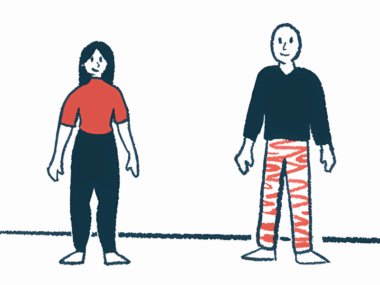Women, overweight MG patients have poorer quality of life: Study
Diagnostic delay is also longer in women than men, say researchers
Written by |

Women with myasthenia gravis (MG) have more severe disease and worse quality of life than men, according to a study in Germany, which also found overweight patients had poorer quality of life too.
The delay in being diagnosed was also longer for women than for men, which may result in treatment starting late and “explain the greater severity of the disease in women,” the researchers found.
Understanding these differences can help doctors find better ways to improve the lives of people with MG. “The time to diagnosis needs to be shortened,” the researchers wrote, noting that dietary changes may be needed as part of treatment.
The study, “Female sex and overweight are associated with a lower quality of life in patients with myasthenia gravis: a single center cohort study,” was published in BMC Neurology.
MG occurs when self-reactive antibodies interfere with the communication between nerves and muscles, leading to muscle weakness and fatigue. Symptoms often get worse with repetitive activity and ease with rest, but everyday activities like eating and walking may become challenging. While treatments are available to ease symptoms, living a full life can still be difficult.
MG is more common in women than men, “the ratio being three to two.” Still, not many studies have looked into sex differences in the course of the disease or health-related quality of life, leading researchers to review data from 165 adolescents and adults with MG, ages 12-91, who were followed at a single university medical center in Germany for up to 47 years.
Comparing MG in women and men
On average, the patients visited the center 14 times during the observation period. They were an average of 54.4 years old when they first had MG symptoms, and a year older when they were diagnosed, on average.
At the onset of the disease, women were a median 10 years younger than men (53 vs. 63). The diagnostic delay, or the time between disease onset and initial diagnosis, was significantly longer in women (mean, 2.15 vs. 0.87 years).
Disease severity was assessed using a modified version of the Quantitative MG (QMG) score, wherein a higher score indicates more severe disease. On average, women scored significantly higher than men on the QMG score (0.56 vs. 0.42 points).
Women also scored a mean of 6.68 points higher than men on the 15-item MG Quality of Life (MG-QoL15) scale, where each item is scored from 0 to 4, providing a total score ranging from 0 to 60. A higher score indicates worse quality of life.
In general, more severe disease translated into worse quality of life, with a 1 point increase in the QMG score resulting in an estimated mean increase in the MG-QoL15 score of more than 15 points.
“Since the quality of life is significantly influenced by disease severity, the development of new therapeutic approaches represents an important element in improving the quality of life,” the researchers wrote.
How weight affects quality of life in MG
Another factor affecting quality of life was the body mass index (BMI), a measure of body fat that takes into account both weight and height. An increase in BMI by 1 point was associated with an estimated mean increase in the MG-QoL15 score of 1.29 points.
BMI also heightened the impact of MG on activities of daily living such as speaking, brushing teeth or combing hair, and getting up from a chair. This can be measured using the MG Activities of Daily Living (MG-ADL) scale.
Each item in the MG-ADL scale is scored from 0 to 3, providing a total score ranging from 0 to 24 points, wherein a higher score indicates greater MG impact. A 1 point increase in BMI resulted in an estimated 5% mean increase in the MG-ADL score.
The average BMI was 28, which falls within the overweight range. It was similar in women and in men (27 vs. 29.1), but women were significantly more impacted in their activities of daily living (MG-ADL score: 4.8 vs. 3 points).
Women were less likely than men to be treated with corticosteroids (80% vs. 92.9%), but were significantly more likely to receive intravenous immunoglobulin (35% vs. 18.8%), where a pool of antibodies is infused to help neutralize disease-causing self-reactive antibodies. This treatment is typically used when the disease is more severe or doesn’t respond well to other treatments.
The findings suggest doctors should consider sex differences in MG. Working to lower BMI could also improve the quality of life for people with MG, who “should be informed that a high BMI can have a negative impact on their disease-specific quality of life,” wrote the researchers, who noted their study showed women wait longer to be diagnosed after the onset of their symptoms.
“The longer period of uncertainty and the increased suffering associated with this can have a negative effect and can cause a later start of therapy,” they said.







Leave a comment
Fill in the required fields to post. Your email address will not be published.